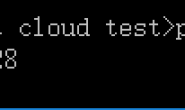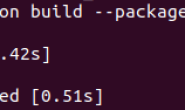导读:如何使用scrapy框架实现爬虫?如何提取爬取的数据?如何处理内容?想要了解更多,就让我们一起来看看吧!
Scrapy安装(mac)
# 安装 pip install scrapy
注意:不要使用commandlinetools自带的python进行安装,不然可能报架构错误;用brew下载的python进行安装。
新建爬虫
# 新建爬虫 scrapy startproject demo
demo为项目名。
确定目标
编写items.py,如添加要爬取的字段,如:
name = scrapy.Field() age = scrapy.Field() hobby = scrapy.Field()
制作爬虫
cd demo # 生成爬虫demo.py scrapy genspider demo "baidu.com"
我们需要修改demo.py里的start_urls的地址为自己想爬取的地址,如:https://www.cnblogs.com/teark/,还需要修改parse()方法,可暂时改为保存所爬取的页面,如:
# 不加encoding会遇到编码问题with open("goal.html", "w", encoding='utf-8') as f: f.write(response.text)
一般保存html信息后,该段代码便没有意义了,注释掉即可。
爬取
# 运行爬虫 scrapy crawl demo
运行完会生成goal.html文件,接下来打开文件,进行调试数据。
页面调试
该过程是为了定位元素,确定xpath表达式的值,使用scrapy shell(最好先安装ipython,有语法提示),调试好了再放到代码里,如:
scrapy shell "https://www.cnblogs.com/teark/"
response.xpath('//*[@class="even"]') print site[0].xpath('./td[2]/text()').extract()[0]
提取
提取过程就是实现parse方法,根据保存的网页提取目标数据,一般用xpath表达式,如:
def parse(self, response): for _ in response.xpath("//div[@class='teark_article']"): item = ItcastItem() title = each.xpath("h3/text()").extract() content = each.xpath("p/text()").extract() item['title'] = title[0] item['content'] = content[0] yield item
至此,html文件和保存文件的代码已经完成了它的作用,可以删掉,我们可以根据定义的字段直接抓取目标值。
# 保存数据,下格式都行:jsonl,jsonl,csv,xml scrapy crawl demo -o demo.json
会生成demo.json文件,里面就是我们所需要的数据。
处理内容-pipeline
每次爬取时输出这么长的指令,能不能简单一点呢?可以的,pipline就是用来保存文件的:
from itemadapter import ItemAdapter class TeacherPipeline: def __init__(self): self.file = open('teacher.json', 'wb') def process_item(self, item, spider): content = json.dumps(dict(item), ensure_ascii=False) + "\n" # 注意写入的是encode之后的字节,不然会乱码 self.file.write(content.encode()) return item def close_spider(self, spider): self.file.close()
还需要在settings.py中添加ITEM_PIPELINES配置,注意路径,如:
ITEM_PIPELINES = {
"teacher.pipelines.TeacherPipeline": 300
}
这时启动爬虫只需要scrapy crawl demo,看看当前目录是否生成demo.json,这样我们输入的指令就简单一点了。
简记
创建-外:scrapy startproject mySpider
生成-内:scrapy genspider name “url”
执行-外:scrapy crawl <内的自动生成的文件>
保存-外:scrapy crawl itcast -o teachers.json(jsonl, scv, xml)




